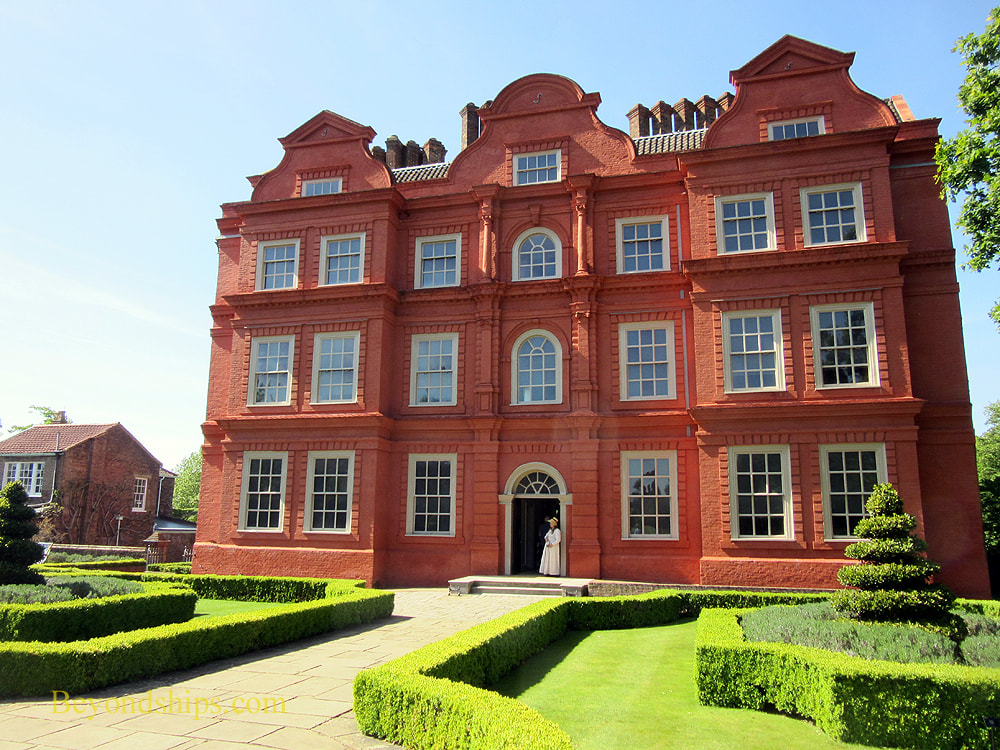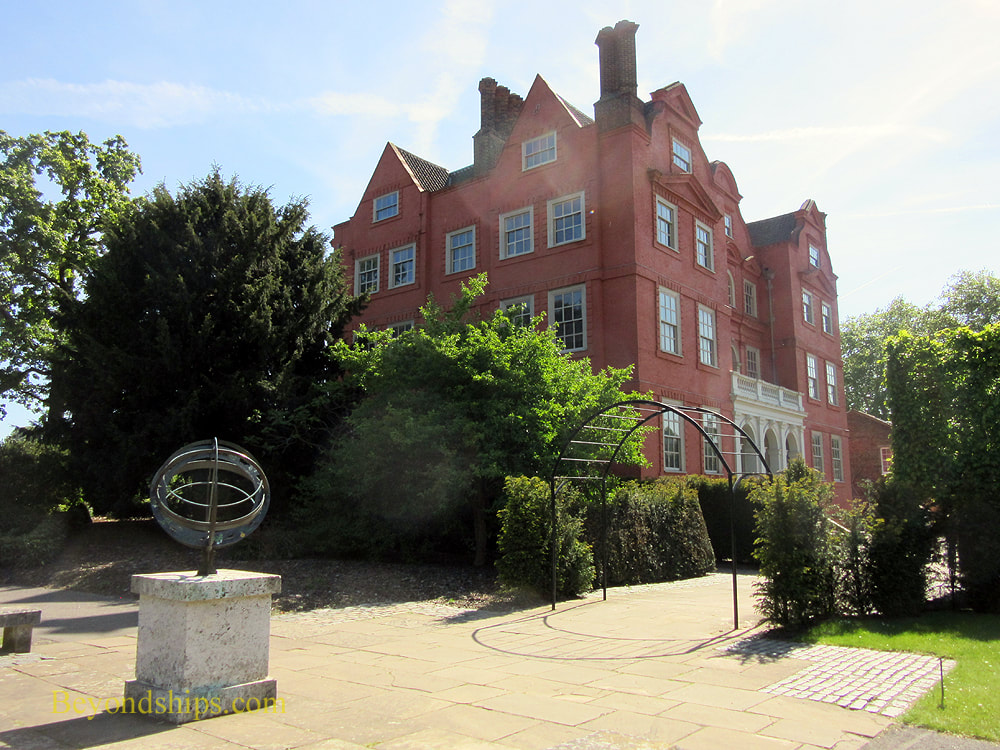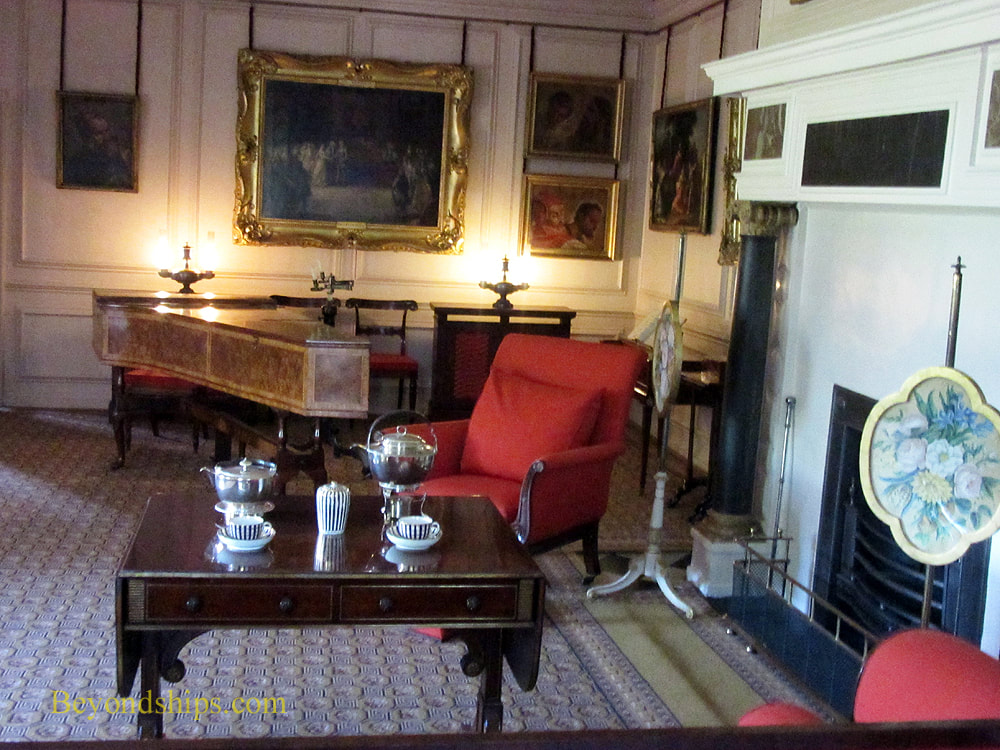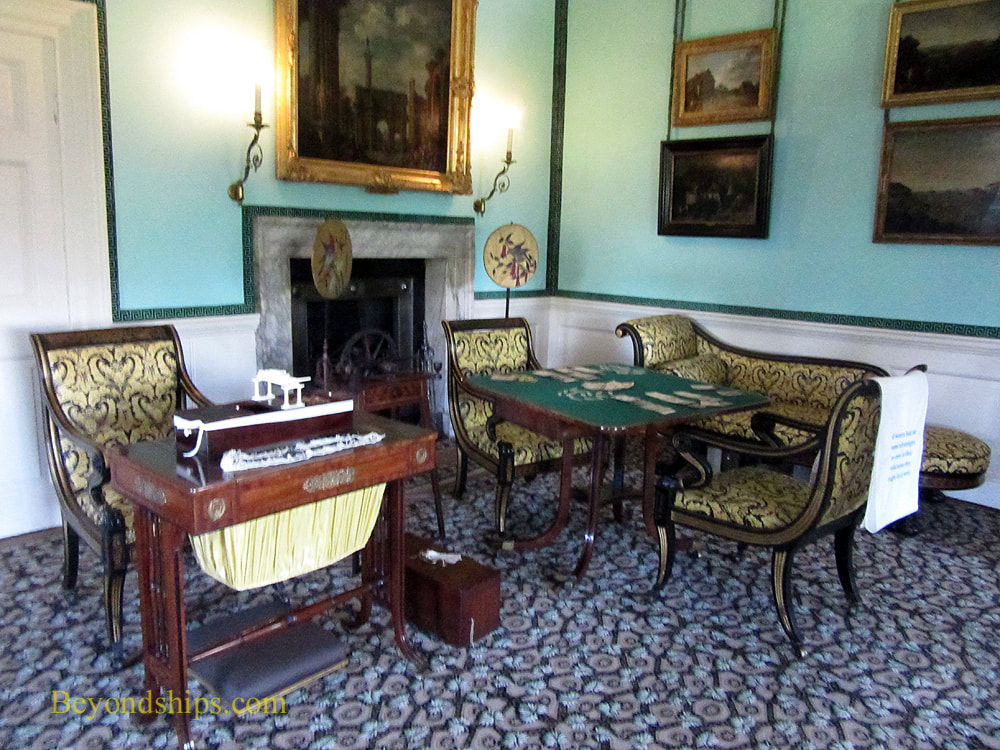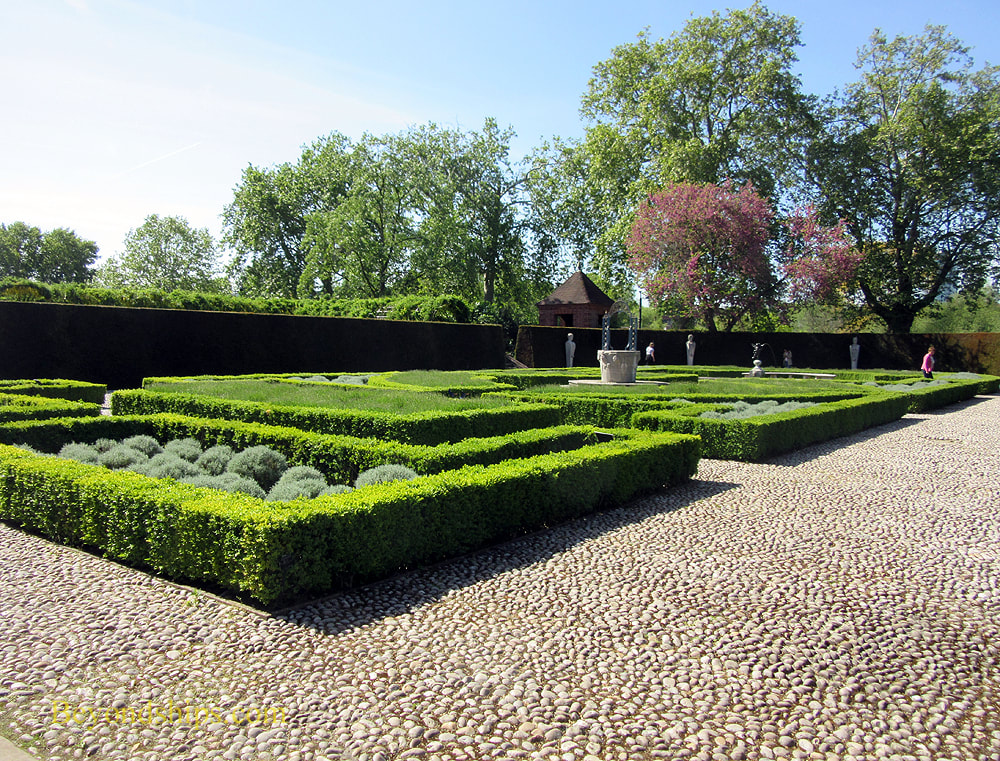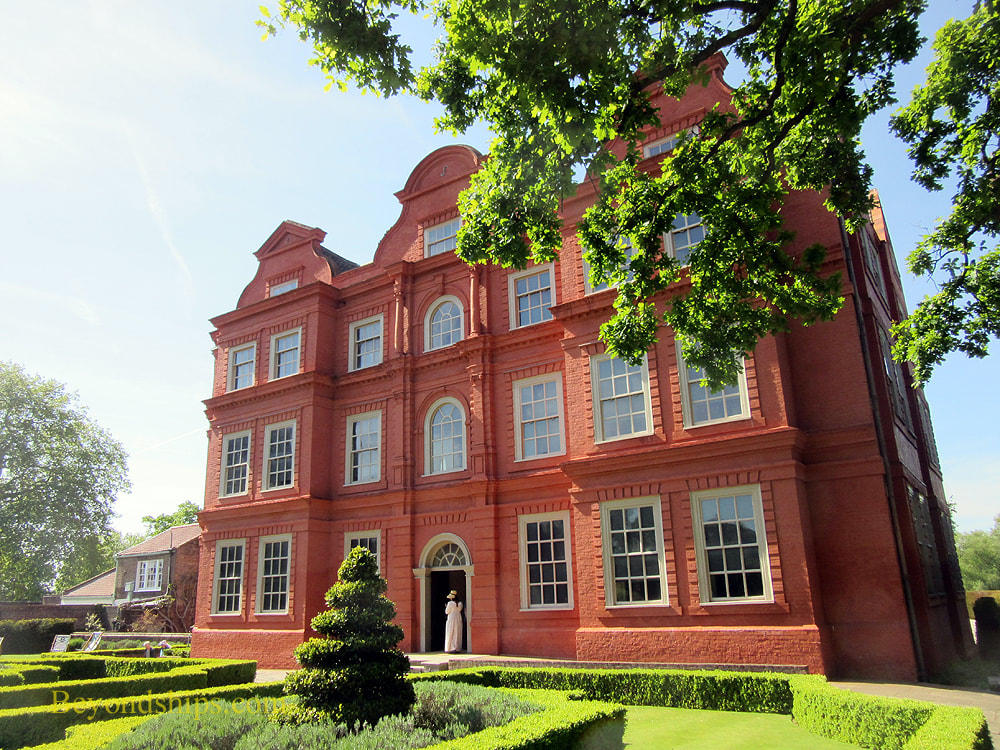|
Kew Palace, the smallest of the British royal palaces, stands in the Royal Botanic Gardens, Kew. Southwest of Central London, it was primarily used as a summer residence by Britain's Georgian monarchs. Today, the palace has been restored and is open to the public.
The palace was built atop the foundations of an earlier house in 1631. It was built for Samuel Fortnay, a merchant whose family had come to England from France. However, local confusion over Fortnay's origins and the house's Dutch-style architecture led it to be known forever after as the “Dutch House”. In 1728, Queen Caroline, consort of George II, leased the Dutch House to be a residence for her three oldest daughters. A year later, their eldest son, Frederick, Prince of Wales, leased the neighboring house, which he remodeled. It became known as the White House because of its plaster exterior walls. The White House was the Prince of Wales' country residence. After Frederick's sisters moved out of the Dutch House, it was used as a schoolroom for Frederick's eldest son's George (the future George III) and his brother Edward. Thus, the Dutch House played an important role in George III's upbringing. After Frederick's death in 1751, his widow, Princess Augusta, continued to live at the White House. She was very interested in the gardens that Frederick had started and continued to enhance them. Two of the Royal Botanic Gardens top attractions, the Great Pagoda and the Orangery, were built for her by Sir William Chambers. After Princess Augusta's death in 1772, the two houses at Kew passed to her son George, who was now king. He used the White House as his summer residence and the Dutch House as a schoolroom for his two eldest sons. In 1781, the King purchased the freeholds for the property. When the King suffered his first two bouts of “madness” he was imprisoned in the White House. However, by 1801, the White House had deteriorated to the point where Queen Charlotte and her daughters moved into the Dutch House. The White House was then demolished in 1802. (The Royal Kitchens are all that remain of the White House). Meanwhile, work had begun on a new Gothic-style palace at Kew called the “Castellated Palace.” However, the king's final two bouts of madness, during which he was confined at Windsor Castle rather than Kew, resulted in the new palace never being completed. What was constructed was torn down in the 1820s. The last major royal event at Kew was the death of Queen Charlotte. She was on the way from London to Windsor Castle when she became ill. She was taken to the Dutch House, where she died in 1818. King George IV planned to demolish the Dutch House and his successor William IV planned to add a new wing to the Dutch House. However, nothing came of either plan. The Dutch House was offered by William as a residence for the heir apparent, Princess Victoria. However, her mother, the Duchess of Kent, declined the offer on the grounds that the Dutch House was “unfit” and “inadequate” to be a residence for her and her daughter. Nonetheless, after Victoria came to the throne, she briefly used the Dutch House as a summer residence for three of her children in 1844. In 1898, the Dutch House was transferred to Kew Gardens and opened to the public. Kew Palace has been extensively restored. It is not a grand, impressive structure but nor is it a peasant's hovel. Rather, it looks like what it was built to be - - a mansion for a very prosperous merchant. Inside, the rooms are dark but are enlivened by elegant 18th century furniture. For more information on visiting, see Historic Royal Palaces' website. |
For more about Kew:
Click here for our profile of the Royal Botanic Gardens Click here for profiles of the Kew art galleries Click here for our review of Chihuly's art at Kew For more about cruising to England:
Click here for our England home page Click here for our London home page |
Cruise destination - England - London - Kew Palace
